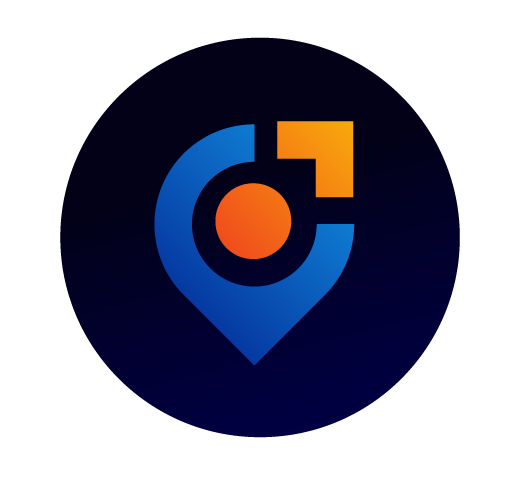Feeling behind at work can drain your energy fast. When planning ahead guides your week, you’ll see how small changes make stressful days easier to control and predict.
The job market rewards those who structure their day and week. Workers who integrate planning ahead into routines often find projects move smoother and distractions shrink.
This article welcomes you to explore proven, action-based strategies for planning ahead. Every example, checklist, or tip offered is designed to fit modern workplace realities.
Establishing Reliable Routines Yields Consistency on the Job
By rolling out set rituals each morning, you’ll anchor your workweek and start each day with steadiness. These rituals amplify clarity, sharpening how you approach every job-related task.
Planning ahead before the week starts sets a smooth tone. Tidy, structured routines mean fewer last-minute changes, so you can perform your best whether you’re in the office or remote.
Anchoring Your Morning for Predictability
Set your alarm for the same time and avoid checking your phone first. Instead, take three breaths by your bed and stretch for two minutes. This preps your mind to focus.
By prepping lunch or choosing an outfit the night before, you slice away small morning decisions that chip at your calm. Planning ahead gives you a true head start on job tasks.
Jot a quick win from yesterday on a sticky note, then bring it with you. Read it at your desk for motivation. That small planning ahead gesture changes your mental energy.
Resetting Rituals at Midday for Maximum Focus
Before lunch, review your to-do list, locate finished jobs, and move incomplete ones to the afternoon. This keeps tasks visible and prevents surprises later.
Place your phone in a drawer right after eating. Sip water, close your eyes, and rehearse the rest of the day in your head for one minute. That level of planning ahead cuts anxiety.
If you hit a slump, take a brisk five-minute walk. As you return, list your top three priorities. Anchoring this midday habit helps planning ahead become a muscle, not a chore.
| Routine Step | Time Needed | Workplace Benefit | What to Do Next |
|---|---|---|---|
| Prepare Outfit | 3 min | Avoids indecision | Lay out clothes after dinner |
| Lunch Prepped | 5 min | No midday scramble | Pack leftovers into containers |
| Top 3 Priorities Written | 2 min | Focuses attention | Write on sticky notes |
| Device-Free Start | 1 min | Reduces noise | Keep phone on silent until breakfast ends |
| Midday Walk | 5 min | Boosts alertness | Schedule right after finishing eating |
Creating Job-Ready Checklists Simplifies Task Management
Clear, categorized checklists give the job seeker or worker repeatable, reliable ways to plow through work. Planning ahead is simplest through precise lists that reveal what’s next.
Instead of juggling mental reminders, document each micro-task. This job market strategy shows managers and peers you’re prepared, detail-minded, and consistent week after week.
Dividing Lists Into Actions and Deadlines
Use one part of your checklist for actions: email Alice, file reports, review budget. Group another for deadlines: by noon, by Thursday, by end of week. This links planning ahead with deliverables.
Separate client-facing tasks from background ones. That way, you can batch similar work and avoid context-shifting. Job markets value employees and freelancers who segment rather than scatter efforts.
Mark finished items visibly, using a digital check or a marker. Each check gives an endorphin boost. This reinforcement cements the planning ahead habit with positive feedback.
- Start your checklist the night before; you’ll sleep easier knowing your first step in the morning.
- Group repeating tasks together. This means less thinking and faster action the next time you perform them.
- Assign deadlines to each list item. Planning ahead curbs procrastination and provides clear, trackable finish lines.
- Include buffer slots: pencil in two open time slots each day for unpredictable tasks or emergencies.
- Display your list on your desk, wall, or phone—visible reminders keep your priorities front-of-mind without mental juggling.
Employers spot the difference between someone who reacts and someone planning ahead by watching their workflow unfold. These work planning habits boost trust and performance marks.
Visualizing Momentum With Progress Boards
Progress boards make momentum visible. Place sticky notes for each current project on the board. Move them as tasks transition from to-do, in progress, to done.
Choose color codes for different stages. For example, yellow for to-do, green for active, blue for review. Planning ahead jumps out in visual form, making your week easy to track.
- Update boards at the same time every day. Ritual builds rhythm, reinforces planning ahead, and reassures coworkers of project status.
- Group tasks by urgency on the board—top for urgent, bottom for non-urgent. The layout nudges you to act on what can’t wait first.
- Invite a peer or manager to check your board. This makes progress visible and supports team accountability.
- Snap a photo of your completed board at week’s end. This documents output—good for self-reflection or performance reviews.
- Refresh the board on Monday. Erasing old notes signals a clean slate and the value of planning ahead for another week.
Progress boards help the job market’s multi-project professionals avoid context-switching and lost priorities. Try this approach to boost focus immediately.
Anticipating Obstacles Saves Time and Reduces Work Anxiety Immediately
Anticipate potential blockers for every project or task. This form of planning ahead means fewer surprises, faster pivots, and minimal flare-ups when job demands spike.
Workers who flag predictable hiccups—missing documents, late client responses, tech outages—can plot backup steps and build trust with both coworkers and supervisors.
Cueing Yourself to Avoid Repeat Mistakes
After a meeting, jot down what didn’t work: “Forgot the login again. Move password doc to cloud storage.” Use that cue next week and embed it in your planning ahead system.
Prep a contingency checklist: “If the client doesn’t reply by noon, send a reminder at 12:30, or call by 3.” This keeps momentum even as deadlines approach.
Learn from past weeks by reviewing hiccups every Friday. Edit your processes so each planning ahead cycle brings fewer repeat errors and a stronger confidence curve.
Buffering Your Week for Unpredictable Changes
Carve out two 20-minute blocks daily for spillovers and emergencies. These buffers mean you’re less thrown by task slippage or new last-minute assignments.
Label buffers on your calendar. Planning ahead isn’t just about tasks, it’s about space to breathe and think. Coworkers see your calendar and learn how to respect boundaries.
If your day runs smoother than expected, use the extra time for learning, mentoring, or revisiting unfinished ideas. Turn these bonus blocks into professional development fuel.
Batching Similar Tasks Reduces Mental Startup Costs Instantly
Batch-processing emails, calls, and reports cuts down time lost to shifting gears. Planning ahead lets you line up similar work, completing it more quickly with less fatigue.
Batched tasks require less mental setup. Instead of checking your email sporadically, dedicate two 30-minute slots daily. Complete the day’s inbox all in one pass.
Using Email Power Hours for Focused Communication
Block the first half-hour after lunch exclusively for email replies, using prepared templates for routine answers. Planning ahead means you don’t hunt for language while your brain’s engaged elsewhere.
Add a 10-word subject line to template replies: “Status Update – Project X, May 2024.” Your manager or client instantly knows the topic and urgency, saving everyone time.
Review sent emails at day’s end for missed follow-ups. This reinforces your planning ahead discipline and closes loops before leaving work.
Pairing Meetings for Consecutive Engagement
Cluster meetings back-to-back, with 10 minutes of decompression between. This approach maximizes engagement for each conversation without context-switching brain drain.
If a meeting finishes early, spend the buffer time noting action items and updating your checklist or board. This keeps the momentum from the call alive.
Decline meetings that fall outside batched slots. Use a script: “Could we shift to 10:30? I keep morning blocks open for focused work.” This planning ahead tactic protects deep work timeframes.
Pre-Committing to Priorities Streamlines Your Week’s Decisions
Identify your three most important outcomes on Monday morning. Planning ahead sets these as your anchor. All minor choices get weighed against them as the week unfolds.
This pre-commitment style aligns with hiring managers’ favorite job market trait: people who understand and protect goals, instead of surrendering to each new whim or interruption.
Applying the Eisenhower Matrix to Weekly Goals
Draw a simple four-square grid on a whiteboard. Label boxes: Urgent/Important, Not Urgent/Important, Urgent/Not Important, Not Urgent/Not Important. Assign each task Monday morning.
Move work from bottom right to upper left each day—handle what truly matters first. This visible system builds your planning ahead muscles, and anyone can read your cues at a glance.
When asked to help with a new task, scan your matrix. Decline politely if it doesn’t fit your current week’s top box. State your priority and offer to revisit it next cycle.
Scheduling ‘No Meeting’ Time for Deep Focus
Reserve a two-hour block twice weekly for solo project time. Mark it “priority work—please book after three.” This planning ahead move announces your focus to the team visually.
If interrupted, point colleagues toward your open-door hours on the calendar. Feedback shows most coworkers support this self-discipline and even copy your model themselves.
End each no-meeting session by documenting what you achieved or which task moved forward. Sharing this with your manager showcases your planning ahead strengths transparently.
Keeping a Planning Ahead Mindset Fuels Long-Term Advancement
Long-range planners don’t just survive busy job markets—they spot opportunities others miss. With new skills or connections, they progress further each quarter, having mapped their route in detail.
Employers cite “initiative” and “forward thinking” as top job market skills. Strengthening your planning ahead muscle today sets the table for next week’s, quarter’s, or year’s milestones.
Building Anticipation Into Your Career Steps
Document upcoming skills, certifications, or team moves you want. Set recurring reminders to check job market trends monthly. Update your planning ahead document as industries shift and new roles open.
Discuss your ambitions with mentors at review time. Show how your project work, guided by planning ahead, lines up with company goals. Prove you’re ready for new challenges.
When a new opportunity appears, reference your notes to decide quickly. If it aligns with your long-term path, act decisively and share your plan with decision-makers.
Reflecting Weekly for Constant Improvement
Dedicate 10 minutes every Friday to review what planning ahead got right—and what didn’t. Log at least one change for next week in your work journal.
Use these notes when goal-setting at quarter’s end. You’ll identify patterns that strengthen each planning ahead cycle, building confidence for future job market shifts.
Share your biggest takeaway with a peer: “Prepping my checklist early made Tuesday smoother.” This feedback loop encourages workplace learning while subtly boosting your own reputation.
Strategic Planning Ahead Transforms Job Market Stress Into Consistent Wins
A consistent planning ahead routine in the workplace keeps distractions small and surprises rare. Projects progress smoothly, and coworkers know what to expect from your side each week.
By using practical tools, from checklists to boards and methodically batching tasks, professionals stand out in a job market where reliability underpins every promotion and review.
Strengthen your planning ahead skills by working each habit described here into your weekly workflow. These real-world steps have supported careers on every rung of the ladder.



